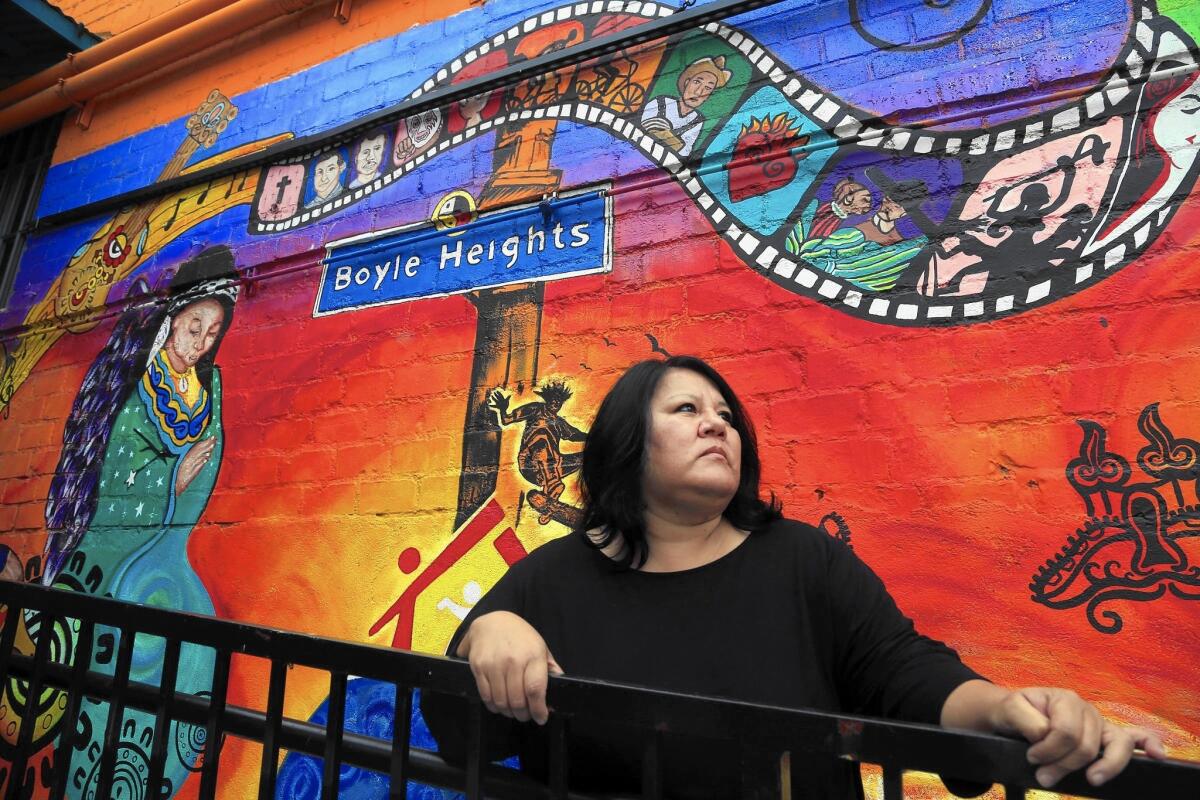Responses to building and safety complaints vary widely across L.A.

- Share via
When Angelenos phone the city to complain about illegal construction, trash piling up next door or other building nuisances, some parts of town have gotten a faster reaction from building inspectors than have others, a Times analysis of city data shows.
The delays have been greatest in eastern Los Angeles, where nearly a quarter of code enforcement complaints languished at least three months without a response. That was twice the comparable rate on the Westside and four times that found in South Los Angeles, according to the analysis, which spanned the period from January 2011 to July 2014. Central L.A., where 18% of complaints studied failed to receive a response within 90 days, was the closest to eastern Los Angeles in terms of delays.
Inspectors also failed to meet the Department of Building and Safety’s own response-time goals — which range from one to 20 days depending on the nature of the complaint — in more than one out of three cases in eastern Los Angeles, a rate nearly 40% worse than the citywide average.
In Highland Park, it took more than a year for the city to respond after a complaint was received about illegal construction work being done on Planada Avenue, records show.
The man who had filed the complaint — and has since died — was surprised when a city inspector finally showed up, recalled neighbor Margie Flock.
“They just presumed they weren’t going to do anything,” she said.
Eventually, after a long-delayed inspection, the department ordered the owner of the home to provide required off-street parking — because spaces had been blocked off by construction, department spokesman Luke Zamperini said. Other lagging complaints on the eastern side of the city involved garages allegedly turned into dwellings in Boyle Heights; builders ignoring design rules in a historic district in Highland Park; and illegal construction in Lincoln Heights, records show.
“It’s astonishing,” said Robert Garcia, founding director of the City Project, an advocacy group focused on equitable development in Los Angeles. “The pattern is quite disturbing. ... All residents of the city are entitled to equal access to services. And clearly the residents of eastern and central L.A. are not getting them.”
The slow response times in eastern L.A. didn’t surprise Margarita Amador, a longtime Boyle Heights resident active with her neighborhood council. “It can take a year, and they never come out,” said Amador, adding, “Illegal construction — people do it all the time because they know the chances of any inspector coming are slim to none.”
Last year, the citywide median wait for a visit from an inspector or other initial action by the building department following a complaint was eight days — compared with 26 days in the eastern parts of the city, according to the Times analysis of records posted on the city’s new open-data website. Complaints involving issues that were deemed potentially hazardous were handled more quickly, with a median citywide wait of three days for a response.
Zamperini said city inspectors “focus on the most egregious or dangerous issues — and if there’s any time left, they get to the other ones.”
Waits for inspectors have improved this year in eastern Los Angeles and across the city, officials point out. But during the first half of this year, the typical wait was still several days longer in eastern areas than citywide, the Times analysis found.
The Times also analyzed response times in smaller areas and found that responses differed greatly from neighborhood to neighborhood, ranging from a median wait of 42 days in Arleta to a single day in Sylmar. In the San Fernando Valley, which had faster overall response times, some eastern neighborhoods had long delays.
Getting an inspection is only the beginning of the process: Actually fixing a problem can take months or even years after an initial inspection.
Building department spokesman Zamperini attributed the uneven response times to budget cuts that he said “butchered” the ranks of inspectors and their supervisors. A decade ago, the department responded to 95% of complaints within seven business days. Last fiscal year, that number had fallen to 48%, according to an analysis prepared by the department.
And the eastern parts of town suffered from more staff vacancies than other areas, he added.
“In a perfect world, the supervisors would be checking the [staff] workload. ... But no one’s had time to do it,” Zamperini said. “The supervisors have all had to take calls and go out into the field.”
Councilman Gil Cedillo, who represents areas of Highland Park, Lincoln Heights and other eastern neighborhoods, said the Times’ findings were “alarming but not surprising.”
Budget cuts have slowed inspections but are “not an excuse for some parts of the city to have faster response times than others — there must be an equitable manner on how we distribute our limited resources,” Cedillo said in a statement.
Heavier inspector workloads don’t appear to fully explain the longer waits on the eastern side of town: Some eastern districts had relatively high numbers of cases, but they were in line with other areas where response times were faster. The Times found little correlation between the number of complaints that inspectors in different areas handled last year and how quickly they responded.
The geographic disparities also don’t align consistently with income or poverty levels, The Times found.
The department declined to allow The Times to interview building inspectors working in eastern Los Angeles or the department’s general manager, Raymond Chan. An official with the Municipal Construction Inspectors Assn., which represents building inspectors, said he couldn’t immediately explain the differences in response times across the city.
City officials have been warned about disparities in code enforcement before. Eight years ago, then-City Controller Laura Chick found that the Building and Safety department was applying rules unevenly because individual inspectors had wide latitude in deciding whether to impose punishments. The result was “inconsistent treatment of code violations citywide,” Chick’s audit found.
The same review found inspectors did not receive adequate oversight from their supervisors. The department responded by improving supervision and writing a code enforcement manual intended to promote consistent treatment of violators, according to a 2010 follow up report.
But the department also suffered cutbacks that hindered improvement efforts, officials said. Between 2006 and 2013, the number of code enforcement staffers assigned to handle general complaints fell 60% from 125 to 50, according to city officials. Just eight were restored in the budget this year, according to Zamperini.
Waits grew after those budget cuts. And some complaints lingered for an unusually long time: As of the middle of July, inspectors had not responded to more than 700 complaints that were at least a year old, records show. They included reports of illegal construction, buildings in need of repair and a host of other irritating, if not dangerous, quality-of-life issues.
Nearly half of those languishing complaints were in the eastern parts of the city, which accounted for just 11% of all complaints, the Times analysis found.
Hector Huezo, chair of the Alliance of River Communities, said slower service provided to eastern areas “sort of confirms the feeling that residents have had historically. ... It looks like our neighborhoods serve as dumping grounds.”
In reaction to the Times’ findings, Councilmen Mitch O’Farrell and Jose Huizar noted they voted to add the new inspectors this budget year. “We’ve seen improved response times in our region in 2014 that are closer to the citywide average,” Huizar said in a statement. “While that’s good news, what occurred previously is absolutely unacceptable, and we need to take safeguards to ensure that there is consistent service citywide in the future.”
After Times inquiries, the department said it plans to add several more staff members to eastern Los Angeles early next year. Already, the department had brought back at least 10 retired inspectors to work on a contract basis, focusing on “older, difficult cases,” Zamperini said. Four of those inspectors were dedicated to the east side of the city, Zamperini said.
Garcia questioned why the department hadn’t detected the discrepancies sooner.
“The city should know this,” he said.
Times staff writers Javier Panzar, Soumya Karlamangla and Doug Smith contributed to this report.
More to Read
Sign up for Essential California
The most important California stories and recommendations in your inbox every morning.
You may occasionally receive promotional content from the Los Angeles Times.











